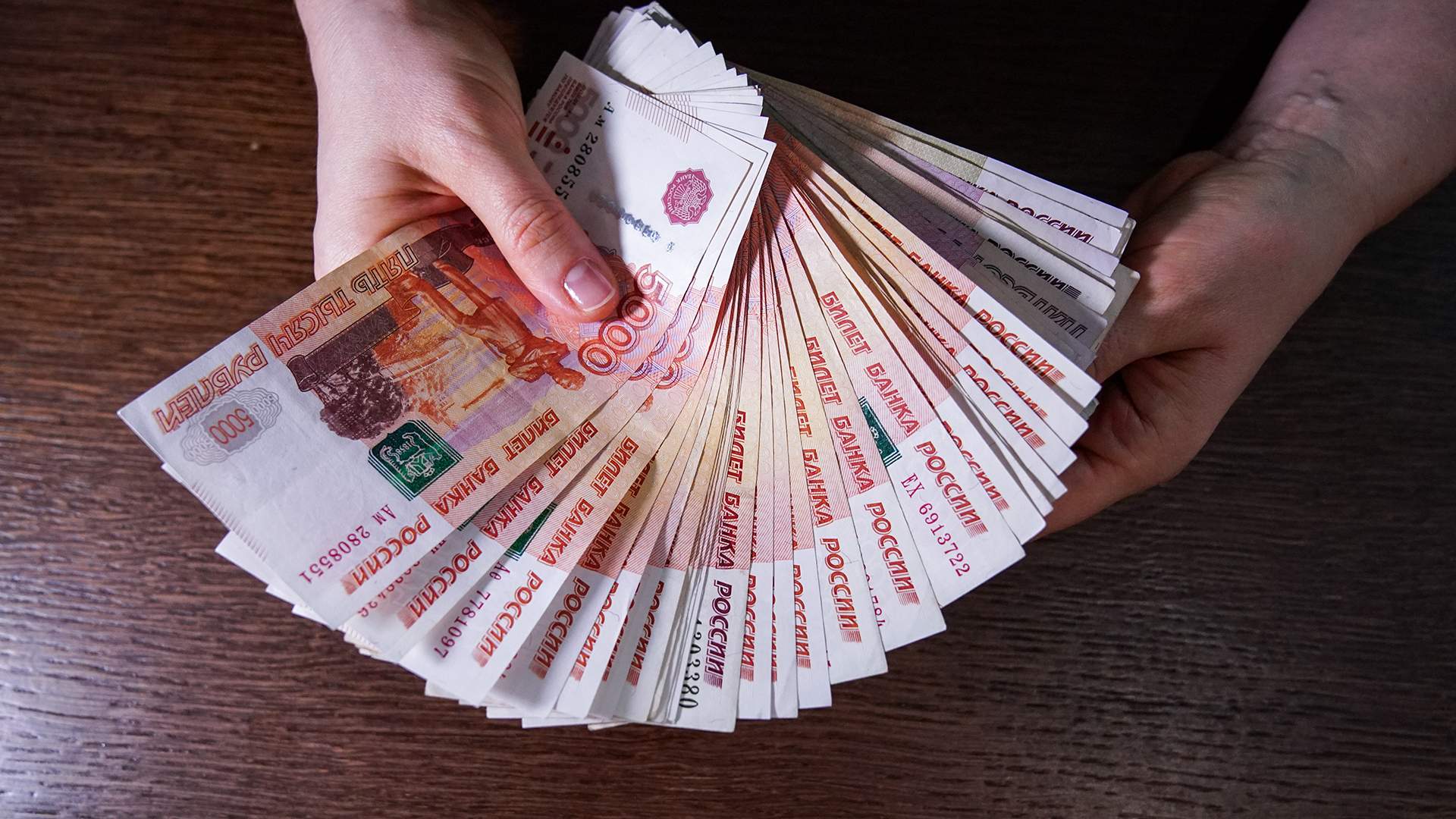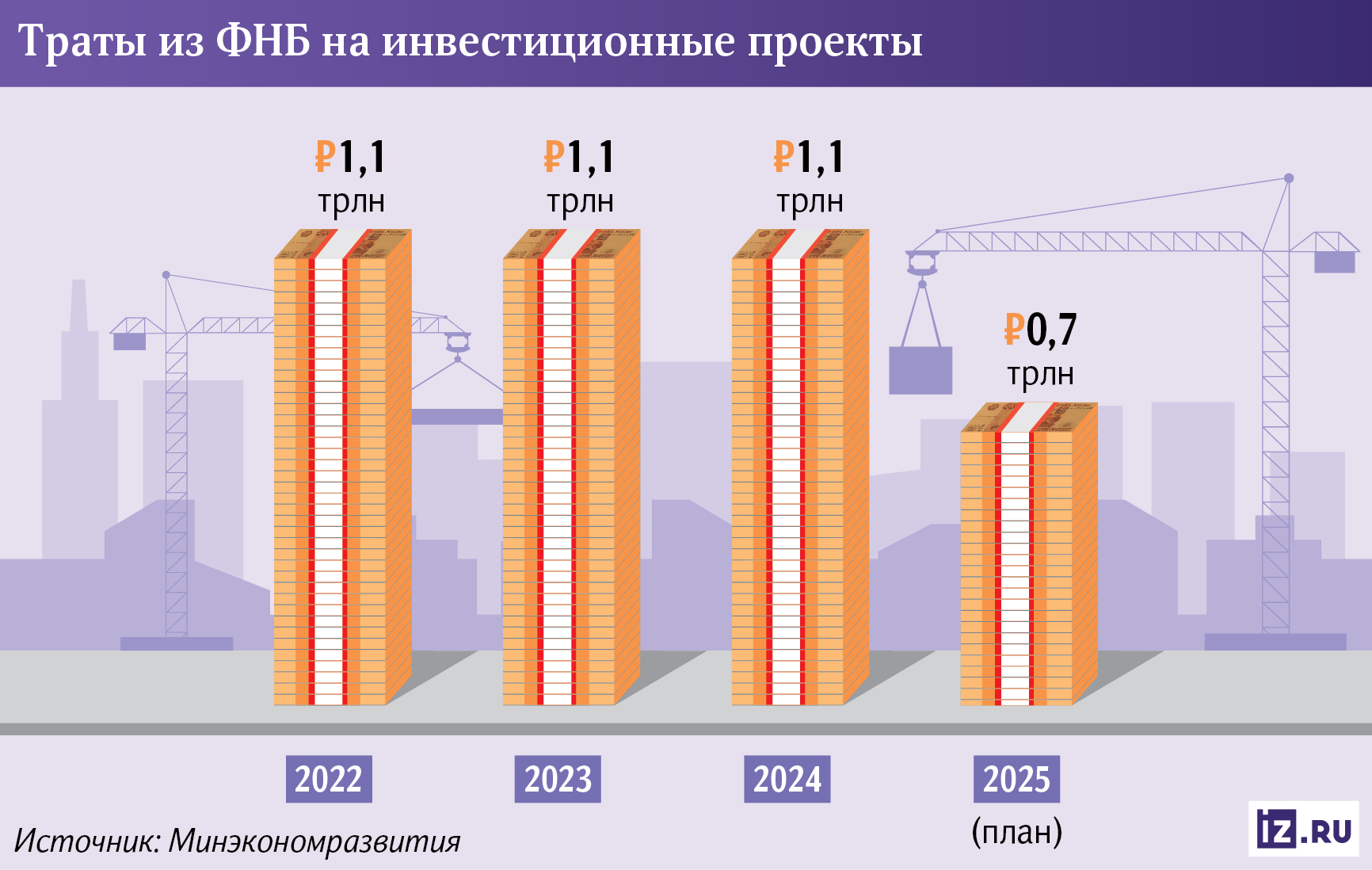- Статьи
- Economy
- Unbalance the balance: the authorities plan to drastically reduce spending from the National Wealth Fund (NWF)
Unbalance the balance: the authorities plan to drastically reduce spending from the National Wealth Fund (NWF)

The authorities have planned a sharp reduction in spending from the National Wealth Fund this year. They are going to spend only Br700 billion on investment projects against Br1.1 trillion in 2024. And they don't think to allocate money to pay off the budget deficit at all, while last year Br1.3 trillion was used for this purpose. The government has become more careful in spending money from the "treasury" against the background of the fact that its liquid part is being depleted: it has almost halved to Br3.7 trillion in three years. However, experts believe that the government's approach to spending from the National Welfare Fund is restrained and balanced and is unlikely to be exhausted.
Spending from the National Wealth Fund in 2025
The key item of expenditures from the National Wealth Fund in 2025 will be the financing of large infrastructure projects. It is planned to spend 700 billion rubles on them, the Ministry of Economic Development told Izvestia. In addition, about 600 million rubles are going to be allocated from the "coffers" for co-financing of pension savings, as follows from the budget for 2025-2027.
Last year, about Br1.1 trillion was also spent on investment projects - in industry and transportation, told the editorial board in the Ministry of Economic Development. In particular, they invested in the construction of a gas processing complex in Ust-Luga. Another major item of expenditure from the "coffers" in 2024 was the repayment of the budget deficit of Br1.3 trillion, according to the financial plan. Also last year, about 200 million was allocated for pensions.
That is, according to Izvestia's calculations, in total, over Br2.4 trillion was allocated from the National Wealth Fund in 2024. This is 3.5 times more than the plans for this year.
In the fall, Finance Minister Anton Siluanov said that the National Wealth Fund would no longer be used to finance the deficit. The shortfall will be covered by government borrowing - through the placement of OFZs. This year's deficit is expected to amount to Br1.2 trillion.
Starting next year, the authorities will use the National Wealth Fund exclusively as a source of insurance in case of a drop in oil prices, Anton Siluanov said earlier. "Izvestia" sent an inquiry to the Ministry of Finance.
What investment projects are planned to use the money from the National Natural Resources Fund in 2025?
In 2025, funds from the National Wealth Fund are also planned to be spent on industry and transportation, the Ministry of Economic Development said. The largest sum will be spent on the development of high-speed railroad from Moscow to St. Petersburg - about 300 billion of the total amount of 700 billion will be spent on it. In the middle of 2024, President Vladimir Putin instructed to make all decisions on the construction of high-speed railroad. In February this year, the head of the Ministry of Transport Roman Starovoit said that the project is on schedule.
In addition, as Ilya Torosov, deputy head of the Ministry of Economic Development, said in an interview with Izvestia at the WEF-2024 at that time, about 300 billion more is planned to be spent this year on large infrastructure projects for oil and gas processing. And also 56 billion - on leasing of water vessels.
- The decision on large-scale financing of the High-Speed Railway is connected with the prospects of economic development of the regions through which the highway will pass. It will also increase the capacity of railroads and unload airports, as well as develop domestic tourism," said Meri Valishvili, associate professor of the Department of State and Municipal Finance at the Plekhanov Russian Economic University.
Before that, back in late 2022, the authorities did not want to fund the High-Speed Railway due to a number of circumstances - in particular, the rise in the price of imported components, the decline in effective demand, the deterioration of transportation forecasts and the refusal of Siemens to supply "Sapsans". In 2024 the project was included in the list of self-supporting projects, Meri Valishvili added. In other words, Russian business found ways to launch this project even in the conditions of sanctions restrictions.
Why the National Wealth Fund is needed and how it is replenished
The Ministry of Finance replenishes the NWF based on the price of oil and the budget rule - if the price of exported raw materials is higher than the cut-off price ($60 per barrel last year), the surplus is sent to the "kubyshka" - currency is bought with it. In other words, oil excess revenues allow to accumulate a "safety cushion". However, if the cost of raw materials is lower than the cut-off price, the currency is sold from the National Wealth Fund, on the contrary.
In the explanatory note to the federal budget for 2025-2027, the replenishment was estimated at 1.6 trillion rubles.
The money in the National Wealth Fund is not lying "dead weight," but working: it is invested in certain assets, for example, in bonds and shares of Russian issuers. This is the illiquid part - it should amount to 7% of GDP, and it cannot be spent. The rest is the liquid part, which the authorities can allocate for priority spending. The total size of the National Wealth Fund as of February 1 was 11.97 trillion.
The reduction in cash spending from the fund is primarily due to a decrease in its liquid part (funds in bank accounts with the Central Bank). According to the most recent data of the Ministry of Finance, it amounts to 3.7 trillion against almost 8.5 trillion three years earlier.
Are there risks of exhausting the National Wealth Fund?
According to independent expert Andrei Barkhota, the reduction in spending is taking place against the backdrop of lower export revenues as a result of sanctions - the situation is aggravated by increased emergency expenditures.
If oil prices drop significantly, the volume of the liquid part of the National Wealth Fund may be enough for a year and a half, said Olga Belenkaya, Head of Macroeconomic Analysis at Finam. According to her, the exhaustion of the National Wealth Fund is not a catastrophe for many countries, but Russia depends on the global oil price situation. We need to keep the free resources of the fund at least to stabilize the exchange rate if the prices for raw materials collapse.
However, according to Natalia Milchakova, a leading analyst at Freedom Finance Global, there is always a theoretical risk of exhausting the National Wealth Fund. However, in practice, there was no collapse in commodity prices even in the spring of 2020, when due to the coronavirus pandemic they fell below $30 per barrel in a moment. Moreover, they recovered quickly and did not lead to critical losses of the fund.
So it is unlikely that the "coffers" will really be emptied in the near future, experts believe. But the fact that the expenditures from it are already decreasing suggests a more cautious approach of the authorities in the current environment.
Переведено сервисом «Яндекс Переводчик»






